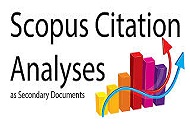Diagnosis Kemampuan Pengajuan Masalah (Problem Posing) Mahasiswa Calon Guru Matematika
DOI:
https://doi.org/10.33394/jk.v4i2.1134Keywords:
Diagnosis, Problem PossingAbstract
Abstract: This study aims to identify the ability to problem posing of mathematics education students as a first
step to establish appropriate learning strategies that can improve student performance in solving problems. The data collection technique used is a diagnostic test that contains 4 non-routine questions, and requires that they make new questions that support the resolution of the given problem. Data analysis is carried out quantitatively and qualitatively. The results of the study showed that the problem solving ability of the 2018 mathematics education students was still very low. This can be seen from the average student test score, which is 54.17 or if it is converted into letters, the average student test score is D. Qualitatively data is obtained <50% of students who are able to raise the problem correctly, even then not all question. Students are less able to represent problems in the form of diagrams or images. Even so >50% of students have good numeracy skills, and almost 100% of students know mathematical notation/symbols. So it can be concluded that the ability of mathematics education students is still weak in problem posing.
Â
Abstrak: Penelitian ini bertujuan untuk mengidentifikasi kemampuan pengajuan masalah (problem posing)
mahasiswa pendidikan matematika sebagai langkah awal untuk menetapkan strategi pembelajaran yang tepat yang dapat meningkatkan performa mahasiswa dalam memecahkan masalah. Teknik pengumpulan data yang digunakan adalah tes diagnostik yang berisi 4 soal non rutin, dan mengharuskan mereka membuat soal-soal baru yang mendukung penyelesaian soal yang diberikan. Analisi data dilakukan secara kuantitatif dan kualitatif. Hasil penelitian menunjukkan bahwa kemampuan penyelesaian masalah mahasiswa pendidikan matematika angkatan 2018 masih sangat rendah. Hal ini terlihat dari rata-rata nilai tes mahasiswa yaitu 54,17 atau jika dikonversikan dalam bentuk huruf, rata-rata nilai tes mahasiswa adalah D. Secara kualitatif diperoleh data < 50% mahasiswa yang mampu mengajukan masalah dengan tepat, da itupun tidak di semua soal. Mahasiswa kurang mampu merepresentasikan masalah dalam bentuk diagram atau gambar. Meskipun demikian > 50% mahasiswa memiliki kemampuan berhitung yang bagus, dan hampir 100% mahasiswa mengenal notasi/simbol matematika. Sehingga dapat disimpulkan bahwa kemampuan mahasiswa pendidikan matematika masih lemah dalam mengajukan masalah (problem posing).
References
Siswono, Tatag Y.E. 2002. Proses Berpikir Siswa dalam Pengajuan Soal. Jurnal Nasional â€MATEMATIKA, Jurnal Matematika atau Pembelajarannya†(Online), (http://www. verypdf.com )
Yuntawati. 2017. Pengaruh Problem Posing Terhadap Kemampuan Penyelesaian Masalah Matematika Mahasiswa Calon Guru Matematika IKIP Mataram. Jurnal Ilmu Sosial dan Pendidikan, Vol. 1 No. 2
Yuntawati & Pujilestari. 2018. Analisis Kemampuan Komunikasi Matematis Mahasiswa dalam Menyelesaikan Masalah Matematika. Prosiding Seminar Nasional: Lembaga Penelitian dan Pendidikan (LPP)
Mandala. P-ISSN 2633-0291 E-ISSN 2623-2774. 29 September 2018
Downloads
Published
How to Cite
Issue
Section
Citation Check
License
License and Publishing AgreementIn submitting the manuscript to the journal, the authors certify that:
- They are authorized by their co-authors to enter into these arrangements.
- The work described has not been formally published before, except in the form of an abstract or as part of a published lecture, review, thesis, or overlay journal.
- That it is not under consideration for publication elsewhere,
- That its publication has been approved by all the author(s) and by the responsible authorities – tacitly or explicitly – of the institutes where the work has been carried out.
- They secure the right to reproduce any material that has already been published or copyrighted elsewhere.
- They agree to the following license and publishing agreement.
Authors who publish with JK agree to the following terms:
- Authors retain copyright and grant the journal right of first publication with the work simultaneously licensed under a Creative Commons Attribution License (CC BY-SA 4.0) that allows others to share the work with an acknowledgment of the work's authorship and initial publication in this journal.Â
- Authors are able to enter into separate, additional contractual arrangements for the non-exclusive distribution of the journal's published version of the work (e.g., post it to an institutional repository or publish it in a book), with an acknowledgment of its initial publication in this journal.
- Authors are permitted and encouraged to post their work online (e.g., in institutional repositories or on their website) prior to and during the submission process, as it can lead to productive exchanges, as well as earlier and greater citation of published work.
- Open Data Commons Attribution License, http://www.opendatacommons.org/licenses/by/1.0/ (default)

This work is licensed under a Creative Commons Attribution-ShareAlike 4.0 International License.








